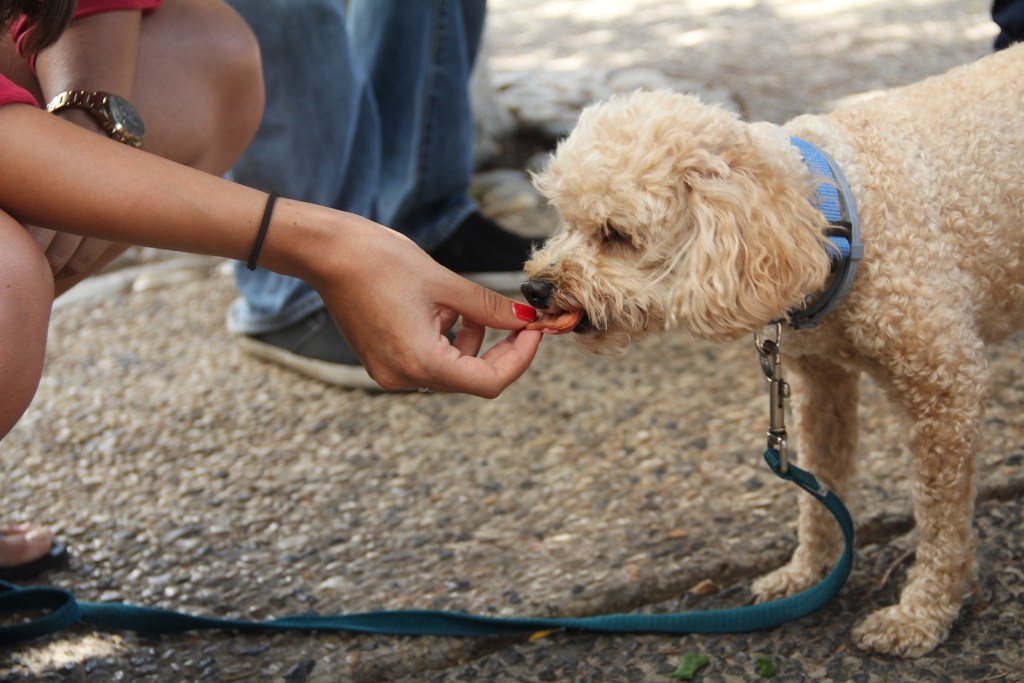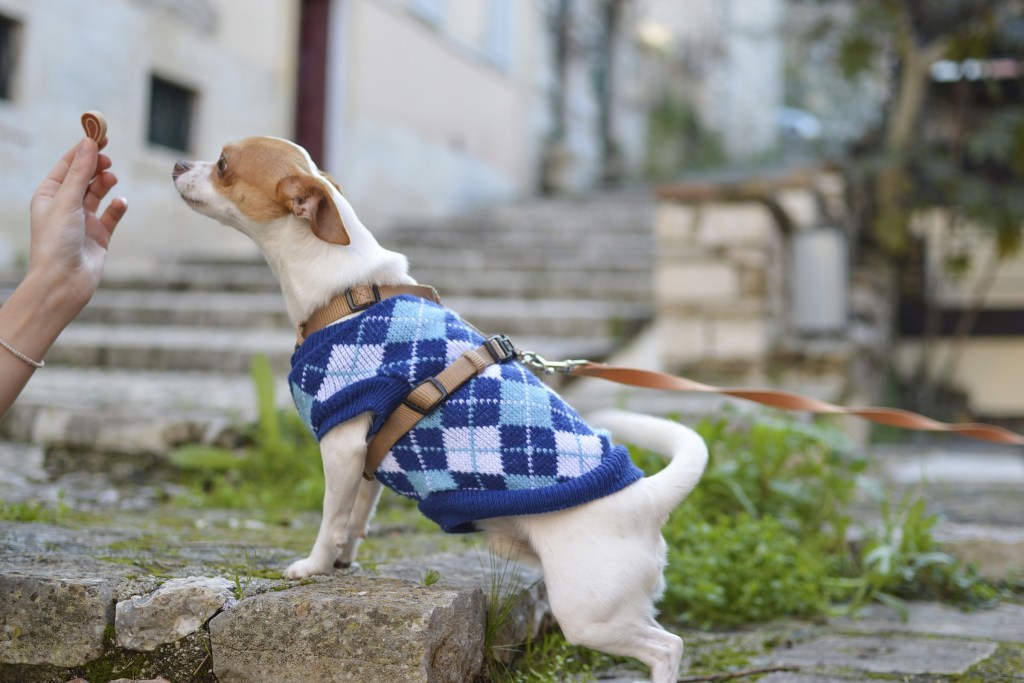Making your dog’s treats from your own kitchen comes with a lot of benefits, from having control over your pet’s diet to saving a few dollars at the store. One of the downsides, however, is the short shelf life that most natural ingredients have. At some time or another, most pet parents have nearly given their pup a scratch-made treat before noticing the batch has gone bad. This inspires the question: What is the shelf life of homemade dog treats?
Freshly prepared dog treats last for about a week on average, though there are a few sneaky strategies you can use to your advantage in the kitchen. With just a little preparation, your pup’s snacks can stay fresh and yummy for twice as long — at least! Here are a few ideas for preparing and storing homemade dog treats that will last a long time.
How to make dog treats last longer
When making and preserving dog treats, keep a few things in mind.
Step 1: The most common culprits of spoilage include heat, air, and light, so you won’t want to leave these snacks sitting on the counter. Storing treats in an airtight container between layers of waxed paper or cloth will be your safest bet. For the biscuits, paper or cloth will not only keep these treats from sticking together but will also soak up any excess moisture that may develop in the container. Look for a secure, dark place to keep them until your pup is ready — in your pantry or refrigerator works best.
Step 2: In general, the longer a treat is baked, the longer its shelf life will be. You can always add an extra minute or two to the baking time when preparing homemade treats. This will help them stay fresh and make them crunchy as well. Dehydrated snacks like jerky can last much longer than other snacks — up to a month or so if refrigerated. That time will skyrocket to months without going bad if you splurge for a vacuum sealer, but this definitely isn’t something most folks have in their kitchen.

Homemade dog jerky treats
Jerky is perhaps the easiest, longest-lasting treat to make for your pup, and it’s something you may want to make for yourself as well! All you’ll need is your meat of choice (pick the leanest cuts you can find, as they will keep even longer) and your method of cooking, whether you use a dehydrator or your oven. Remember not to prepare your meat — you can’t go wrong with beef, salmon, or chicken — with any oils or spices, as these can do more harm than good for your pup.
Step 1: Slice your meat into thin strips.
Step 2: Lay pieces on a nonstick baking sheet. They should be in a single layer but don't need to be spread out.
Step 3: Cook your jerky. If using an oven, choose the lowest possible temperature and check your jerky after 3½ hours. If you have a dehydrator, you’ll probably cook it a while longer.
Step 4: When the jerky is ready, it should be half its original size and dry all the way around.
Long-lasting DIY dog biscuits
Every pup will drool for these classic snacks. They don’t take nearly as long to bake as the jerky-style treats, though storage is key for the longevity of these treats. Here’s what you’ll need: * 1 beef or chicken bouillon cube * ½ cup hot water * Up to 1 teaspoon salt * 1 egg * 2½ cups whole wheat flour, all-purpose flour, or oats
Step 1: To make these tasty treats, begin by heating your oven to 350 degrees.
Step 2: While it heats, dissolve the bouillon in a mixing bowl with the hot water.
Step 3: Then, mix/knead in the remaining ingredients one at a time (make sure to add the flour or oats last!) until you have a ball of dough.
Step 4: Roll out your dough with a rolling pin until it’s about ½ inch thick.
Step 5: Use your favorite cookie cutters to make your favorite shapes.
Depending on the size of the cookie cutter, this recipe can give you a large number of treats, so plan carefully.
Step 6: Place your cookies on a greased baking sheet.
Step 7: Bake for half an hour. Easy as pie!
To keep them fresh as long as possible, freeze the treats as soon as they’re done cooling. This lets them stay fresh for up to six months, versus one month in the fridge and about a week on the counter.

Sweet potato dog chews
For a dehydrated treat with a lighter flavor, replace your meat with sweet potatoes instead.
Step 1: Thinly slice your sweet potatoes.
Step 2: Lie slices on a nonstick baking sheet.
Step 3: Bake them on a nonstick baking sheet for 3 hours at 250 degrees — no salt or seasonings, please!
You’ll want to flip the potatoes halfway through cooking for an even bake, but apart from that, these chews practically make themselves. Good luck keeping your pup out of the kitchen in the meantime!
With these nifty recipes and food storage hacks, you can keep your dog’s treats fresh for longer than ever. Remember, not all ingredients stay their freshest in the same conditions, so read up on any produce or meats in your specific recipe. For example, some foods must be refrigerated to keep from spoiling, while others may turn faster due to the moisture in the fridge.
Don’t fret if you can’t figure out the best ways to preserve treats quite yet; sometimes trial and error are all you need. Besides, your four-legged sous-chef will happily help you sample a second batch. “Bone” appetit!
Editors' Recommendations
- The Best Dry Dog Food of 2023 for a Balanced Diet
- Why is my dog panting? 7 solutions to try when your dog won’t stop panting
- Are Starbucks Puppuccinos bad for dogs? Here’s what veterinarians have to say
- How to make a dog throw up – safely, quickly, and at home – after ingesting something they shouldn’t have
- Does your dog drink a lot of water? Here’s when you should be concerned




